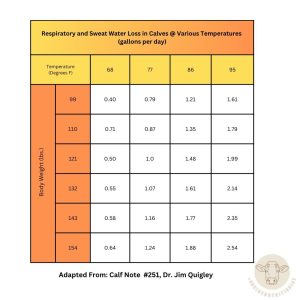Wholesome food is an act of love for the Thomas family. An act of love for those they are preparing it for, as well as a love for the animals and plants it came from. This love for wholesome food brought the Thomas’s to owning a family dairy cow. Their family already participated in gardening, hunting and gathering, and fostered native habitat for animals and pollinators. A family cow was a practical expansion of their interests.
Although the Thomas’s love wholesome food they are not absolute, you will most likely see her husband with a Pepsi in hand and Catie loves a good late-night Snickers bar too.
Q: What made you want to start milking cows?
A: “Honestly, my beef background is where my love of milking was born. When I was 14 or 15 years old, I had a favorite black Angus cow named Annie. She lost her second calf in a freak blizzard. Since she was tame and halter broke and I always wanted to milk a cow, I decided to milk her. I fell in love with the rhythm that milking gave my day, the sound of the milk hitting the stainless-steel pail, how cozy it is in the barn in the winter, the warm steam from the milk, all the things. We milked Annie about 9 months, a pretty normal lactation, and then she went on from there, back to being a normal beef cow.
Fast forward to about a year and a half ago, I was looking for a raw milk source for my family. None of the local producers had any availability and I jokingly told my husband that maybe we should just get a family cow. He didn’t say no, so I took it as a yes and I bought a cow! A jersey cow named Kimber, and the rhythm of my milking days began again.”
Q: How did your micro dairy grow from just 1 cow to 6 cows?
A: “I didn’t set out for this to be a business. I wanted a family cow, but I didn’t need 5 gallons of milk per day. I thought if I could sell some of the extra milk and maybe break even on my feed costs, then my hobby would not cost us money. I never dreamed there was so much interest in raw milk. I started adding people to a wait list and then I realized there were enough people on the wait list to justify getting another cow, so we did! As a stay-at-home mom I was really excited to be able to contribute financially to my family.
We have continued to do more research and get better at what we do. When I have new customers interested in raw milk, I add them to the waitlist. When the waitlist gets big enough to justify another cow, we get one. A year and a half after getting our first cow, both my husband and I are home milking. He was ready for a job change, and while it might not be forever it’s nice that we both get to be home during our babies’ formative years.
We grew our business organically, mostly word of mouth. With each cow you add, you need more supplies, which adds complexity, but we will just see where it goes.”
Q: How has milking changed on your farm as you have added more cows?
A: “Starting out we did 0 research and nothing right. I didn’t know about pre and post dip and milking procedures, we just milked every morning and night by hand. I did have a stainless-steel milk pail and a strainer, so that was great, but we didn’t really follow any of the rules and we got lucky that it worked out as well as it did.
Now we have 2 stanchions and 2 milk machines. We position the milking machines between the 2 stanchions. My husband and I both milk at the same time, each milking 3 cows, and we use proper milking procedures and cleaning protocols.”
Q: What advice do you give to people when they start purchasing raw milk?
A: “I tell them to go slow. It can cause some GI upset, not because of anything bad in it, just because it is different than what most people are used to having if they are buying pasteurized milk from the store. It digests differently in our body than pasteurized milk does.”
Q: What is the biggest challenge that you have faced in your micro dairy.
A: “Aside from the regular challenges that come with being livestock stewards, our biggest challenge has been having the right amount of milk. Additionally, there is a steep learning curve when you learn to care for dairy cattle. I went into this thinking I would be able to rely on my beef background, and yes, a cow is a cow, but dairy cattle are drastically different! I knew nothing about the dairy world. I have been very grateful for others that are willing to share their knowledge and act as mentors. Without them I would not be able to do it as well as it is going now.”
Q: What is the most rewarding thing about having a micro dairy?
A: “Getting to share my love of wholesome food with other families. Last I counted we have 90 people on our customer list. It is an honor to know that every week milk from our cows is a daily part of their lives and has a small place at their table. Hearing customers share that they can have dairy for the first time in their adult lives is very rewarding. Maybe, even more than that is the kids. We have a few customer families with kids that can only have raw milk, knowing that they can have chocolate milk and ice cream like everyone else is awesome. I love it when the kids come with to pick up their milk. They can ask about what cow their milk came from. Bridging the gap between people and where their food comes from has been really rewarding.
Q: In Iowa what kind of rules do they have regarding the sale of raw milk?
A: “In 2023 sale of raw milk by the gallon was legalized in Iowa. Each month we have to test SPC and Coliform and annually our cows have to have a vet exam and be disease tested to ensure our milk is always safe for our customers.”
Thank you Catie for sharing all about your micro dairy with us! You have done amazing things when it comes to feeding your community.
Written by: Mariah Gull, M.S.



